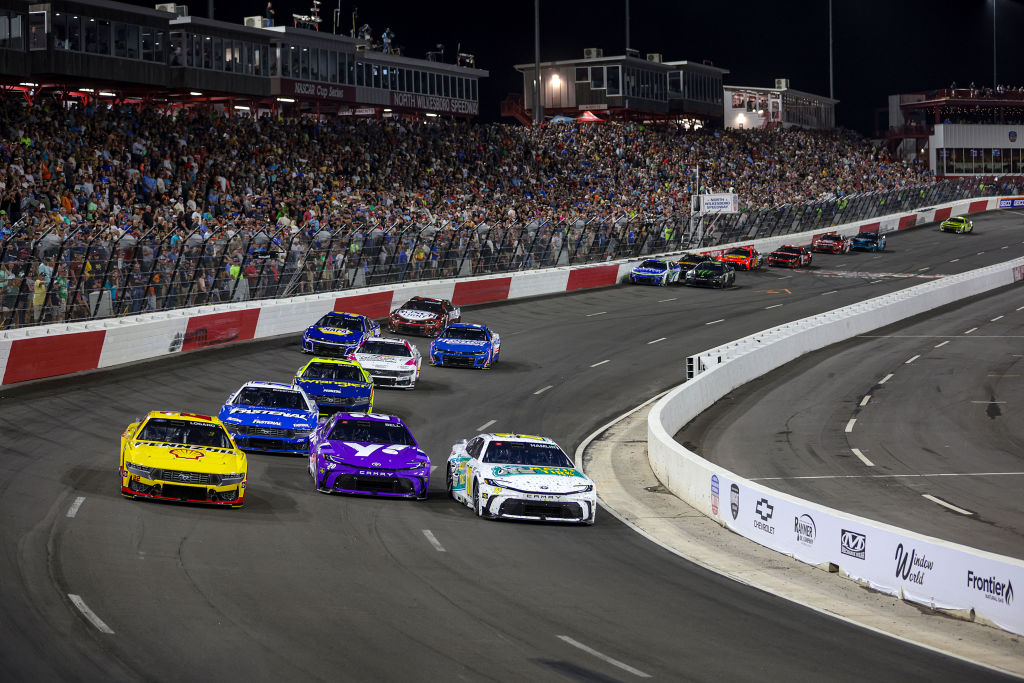In previous editions of the NASCAR All-Star Race, ideas for potential future implementation were included in the festivities. Since the race doesn’t award points, it was easy for NASCAR and its teams to use the event as a test session.
It won’t happen this year, but there was an option. The industry found itself split on the idea though.
NASCAR proposed to teams the ability to “run what you brung” to North Wilkesboro Speedway. Although safety components of the race car would be off limits, NASCAR would have let the teams use their ingenuity to modify the car. At the heart of the idea was that it might lead to finding something that could be done on the Next Gen car to improve short track racing, which has been widely criticized since its introduction in 2022.
There is no better test than a real-world application in a competitive race. The garage, however, didn’t bite on the idea.
A part of the concern, but not the sole reason, centered on cost.
“What we were hoping to accomplish with the quote-unquote run what you brung idea was to put it more into the team’s hands,” Mike Forde, NASCAR managing director of racing communications, said on this week’s edition of the Hauler Talk podcast. “And if we can see a particular car be able to run through the field easier or better yet go from fifth to third, then drop back to sixth, but make its way back up to fourth or higher, we’d be able to talk to those teams and say, ‘OK, what did you do to your car?’
“That’s exactly what we’re hoping to accomplish in Martinsville, Bristol, and Richmond. So, we’d be able to get some ideas and have a sheet of ideas where we’d have all these ideas and build it out.”
Denny Hamlin leaned heavily into that aspect this week when waiting to address the idea on his podcast. Hamlin, a co-owner of 23XI Racing, estimated the cost his organization would have to put in to change the parts and not having the ability, through the necessary tools at the shop, to even make that happen, which would mean going to its alliance partners and paying for that.
“We’re going to destroy three of our cars to build this car,” Hamlin said. “I’m going to spend $1 million just in parts and pieces; we haven’t even developed anything yet. So, just in parts and pieces, to replace all the (stuff) we’re going to modify, we’re going to spend a ton of money, and it only pays $1 million.
“It’s paid $1 million to win for 30 years. For 30 years. It’s not that cool anymore. Even if one of my cars won, I don’t see this as a remotely break-even proposition. And for those who complain about, ‘Well, all you talk about is money,’ it’s because the teams don’t have enough money. This is what we’re fighting for. This is what we’ve been talking about.”
Hamlin did emphasize that as a driver and fan, he would favor the concept. His pushback came as a team owner.
On the cost, Forde said, “Denny talked about how this would cost potentially $2 million if we went ahead and did this. I think his math was off by about $2 million. What actually it could cost is $0 or potentially save teams money, believe it or not.”
Forde also countered Hamlin’s claim that it was an idea that had not been fleshed out with ample time. Forde responded that a working group had been going through this idea for months and even referred to an early March meeting between NASCAR and team competition directors.
Another counterpoint from Forde was that teams would not be allowed to modify the chassis, so it would not take a chassis out of their allotment of seven per car number. He also said there was a list of things that teams could and could not do as it pertained to parts, and subsequently, the cost to do so. The areas teams would be allowed to play would have been ride heights, nose weight, what diffuser they wanted to use, underbody strakes, and spoiler base.
In other words, whatever is already in the inventory. So, there would be no added cost because, according to Forde, “what we presented to the teams was that you could not modify any parts, you cannot build new parts, you can’t create any new parts. Everything still had to be single-sourced.”
Kyle Busch was a guest on the Door Bumper Clear podcast this week and liked the idea. He had heard NASCAR was open to many ideas of what teams could play with and also saw it as an opportunity to learn something to help the car perform better.
“I was for it,” Busch said. “I thought this could be something to see because this car is short track challenged. … I kind of get the team’s perspective of it, but somebody needs somehow to figure out how to make this team race at a short track better.”
Aside from cost, Forde offered this as to why the concept is not happening, “A lot of the quotes (in a story by The Athletic) from the competition directors really don’t focus on costs all that much. I think that maybe a little bit here or there, but they looked at it more as a distraction, which I think is a fair one. … There were owners and competition directors who were worried about the cost as well.”
